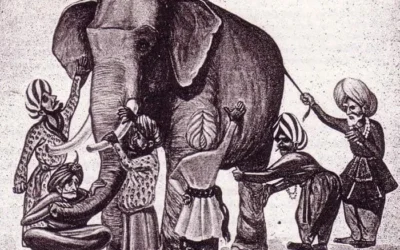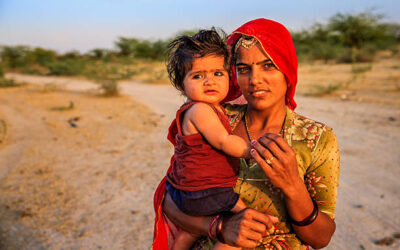A major breakthrough in the pursuit of water was achieved by Chewang Norphel. Born in 1936 to Tibetan parents, Norphel hails from Skarra village, 2.5kms away from Leh in Ladakh. All hundred families of his village have traditionally been subsistence farmers, cultivating wheat, barley, mustard and peas. As a child, he tended cows and yaks, while his father tilled the hard and crusty soil. For Chewang Norphel, it became an obsession to sit in his garden during his holidays and ponder over this conundrum, while idly watching the water drip to the ground from the lone village tap. The tap had to be kept open in winter to let the water flow through so that it did not freeze and burst the pipe. So the water dripped away, wasting into the earth, forming a large pool that became a sheet of ice in winter…
All through the winter even when the temperature is -15 degree Celsius, glaciers melt as the sun comes up. This melt does not refreeze as it flows down, due to the velocity it acquires. It just flows down the mountain and goes into the Indus and away. That’s how Norphel hit upon his simple but brilliant idea.
What if he stored the plentiful water from the melted snow someplace close to the village all through summer and autumn so that it could form a glacier in winter? This man-made glacier would then melt in spring to provide the much needed water for the villagers at the right time. The natural Himalayan glaciers were located at about 18,000 feet. The solution would be to form glaciers near their villages at about 13,000 feet so that it would melt earlier in the year, and thus provide water for his villagers in April.
The idea struck him in 1987. A junior engineer in J & K government’s rural department, Norphel put all the knowledge gained from his Lucknow civil engineering diploma course, local work experience and meager resources to translate his idea into action on a trial basis in water-starved Phutse village, 80kms from Skarra. He dug and built diversion canals to channel the water from main mountain streams to suitable water catchment sites about four kms away from the village. He designed the reservoirs in a series of steppe formations, locating them in mountain shade so that the water would remain frozen in winter to form large glaciers. From the glacier, feeder canals took the water back to the natural mountain streams that irrigated the villages.
Water from the reservoir is let into this waterway, slowly using diversion canals. At the far end one of the several check dams is seen. It is about 5-6 ft in height. It is constructed with stone and a bit of mortar and held together with iron mesh. These check dams slow the flow of water and refreeze it.
The idea worked. As the glaciers were located lower down, they melted early and the villagers start getting water in April when they needed it most. Restoring the viability of rural farming has many unseen and long term benefits. It stems the tide of rural displacement. Poverty has driven away so many young men and women from their pristine villages to the degrading slums of the towns nearby and cities far away. Keeping villagers rooted to their farmlands not only ensures a safer, healthier and better life for them, but also helps to preserve the local Tibetan culture and Buddhist heritage.
Here is a video that will help you understand his work better.
Cover photo courtesy The Economic Times
Reference: http://www.thealternative.in/society/chewang-norphel-the-glacier-builder/



Beautifully written. This made the concept more clear for me.